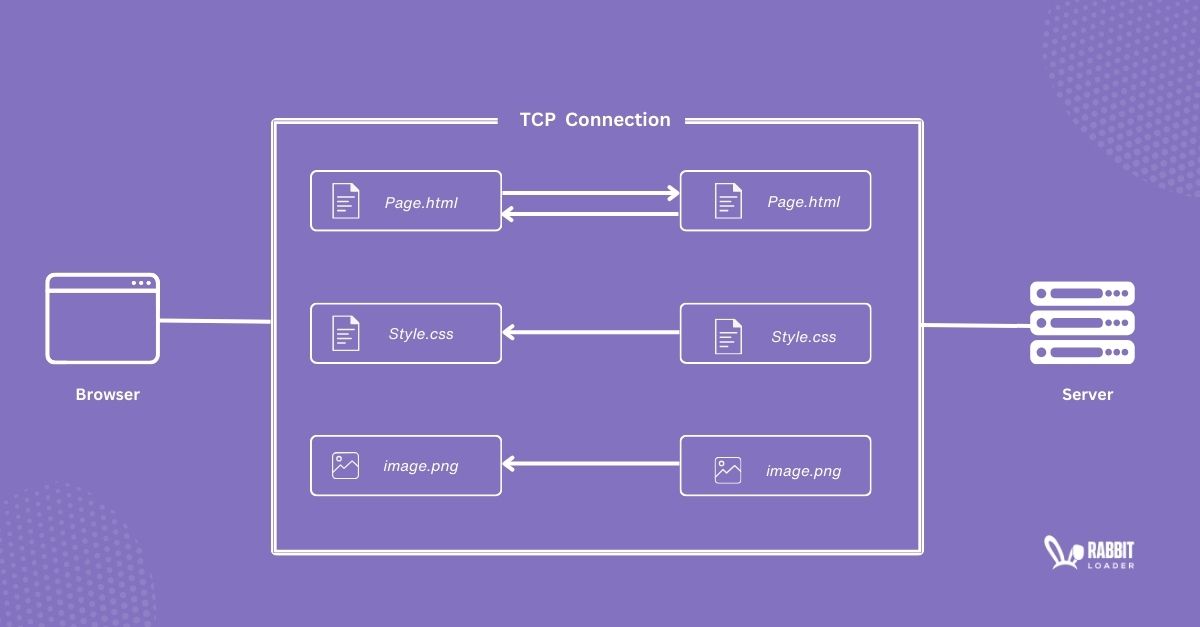Get The Best PageSpeed Score
For Your WordPress Website

What is HTTP 3.0? Exploring the key differences between HTTP 2.0 and HTTP 3.0
HTTP 3.0 is the new standard in development that affects the server and the web browser communication, with notable upgrades for website performance, security, and reliability to provide a better user experience.

Hypertext Transfer Protocol (HTTP) is the backbone of the Internet. The most common versions are HTTP 2.0 and HTTP 3.0. Here we will discuss the key difference between these two versions.
What is HTTP 3.0?
HTTP 3.0 is the latest version of HTTP (Hypertext Transfer Protocol). It is used to transfer data between a user and a web server over the Internet. It is established on the QUIC (Quick UDP Internet Connections) protocol, which is an experimental transport layer network protocol.
HTTP is the third-generation protocol. In the table below, we have mentioned all HTTP protocol versions along with their release dates & Key features.
| HTTP Version | Released | Key Features |
| HTTP 0.9 | 1991 | One-line protocol with GET |
| HTTP 1.0 | 1996 | HTTP header, Status code, POST, and HEAD |
| HTTP 1.1 | 1997 | More HTTP functionalities, keep-alive connection |
| HTTP 2.0 | 2015 | Transmission Control Protocol (TCP), header compression (HPACK), a new binary framing layer, multiplexing, server-side push. |
| HTTP 3.0 | 2022 | QUIC over user datagram protocol (UDP), header compression (QPACK), TLS (Transport Layer Security) by default, connection ID, |
Why is HTTP 3.0 Needed?
HTTP 3-0, the newest iteration of the Hypertext Transfer Protocol (HTTP), is needed to address the challenges and limitations of HTTP 2.0. It will be the first major upgrade to HTTP since it was approved in 2015.
HTTP 3.0 aims to improve the performance, reliability, and security of web communication, especially for scenarios with packet loss or high latency. The biggest advantage is that HTTP 3.0 runs on QUIC (Quick UDP Internet Connections). It is designed for mobile-heavy Internet usage for users who carry mobile devices that constantly switch from one network to another.
See more: Web Caching Startegies
How to Enable HTTP 3.0 on Your Browser?
The latest versions of Mozilla Firefox, Google Chrome, and Safari support HTTP 3.0, but you need to enable HTTP 3-0.
- Steps to enable HTTP 3.0 in Google Chrome:
Step 1: Open a new tab in Google Chrome and go to the chrome://flags page.

Step 2: Search the QUIC flag and enable it.

What is QUIC Protocol?
QUIC (stands for Quick UDP Internet Connections) which is a transport layer network protocol developed by Google. According to the Internet Engineering Task Force (IETF), QUIC is an encrypted connection-oriented protocol that operates in the Transport Layer or the 4th layer in the OSI (Open System Interconnection) model.

The key benefits of using the QUIC protocol are:
Reduce the Connection Time:
To establish TLS encryption, the server and the client need to perform a TLS handshake and exchange the encryption keys. This process is time-consuming due to the 4 round-trip requests involved.

Where QUIC is able to replace all these steps with only a single handshake and reduce the connection time.
Better Performance when Data Packets are Lost:
HTTP 2.0 on TCP can suffer from head-of-line blocking, which indicates that the first packet can hold up a line of data packets. If one data packet is lost, the recipient must wait for the lost packet to be retrieved, which affects the connection performance.

The QUIC protocol can solve this issue by allowing streams of data to reach their destination independently. So, they no longer need to wait for the missing data packet to be repaired. Even the IP address is changed.
Easier to Improve and Develop:
TCP protocol is implemented in the Kernel operating system, which means you can’t change it easily, whereas QUIC can be implemented in the application layer in the OSI model, making this protocol more flexible.
Stable Connection when Networks are Changed:
If the system is connected to the server via Transmission Control Protocol (TCP) and the network connection suddenly changes from 4G to Wi-Fi, the connection needs to be re-established.
Get The Best PageSpeed Score
For Your WordPress Website
This issue can be solved by QUIC. QUIC protocol allows a smoother transition by a unique identifier. These can be created by connection establishment by only sending the packet rather than re-creating the whole connection.
The Key Difference Between HTTP 2.0 and HTTP 3.0
Now, you have a brief idea of HTTP 2.0 and HTTP 3.0. While both protocols are used for transferring data, they have some key differences.

Let’s understand the key difference between HTTP 2.0 and HTTP 3.0.
- Transport Layer:
HTTP 2.0 operates over TCP (Transmission Control Protocol), which is a standard web communication.
Where HTTP 3.0 uses QUIC (Quick UDP Internet Connection) protocol over UDP. QUIC is a new transport protocol that was developed by Google in 2022.
- Encryption:
While both HTTP 2.0 and HTTP 3.0 support encryption through Transport Layer Security (TLS), the QUIC protocol in HTTP 3.0 can encrypt the entire communication, including the handshake process.

Building the encryption into the protocol itself can improve privacy and security in HTTP 3.0 compared to HTTP 2.0.
- Head-of-Line Blocking:
In HTTP 2.0, Head-of-Line blocking issues can be raised where the transmission of a large resource can block the other resource in the same connection, especially for multiple requests.
HTTP 3.0 is designed to solve this issue by allowing independent streams to progress without being delayed by other resources. Reducing the latency improves overall web performance.
See also: Interaction to Next Paint
- Server Push Efficiency:
Both protocols can support server push, where the server continuously sends the resources to the user without waiting for an HTTP request.

However, HTTP 3.0’s implementation is more efficient due to its underlying transport protocol.
HTTP 3.0 represents the advantage over HTTP 2.0 in terms of overall performance, security, and reliability. The QUIC protocol offers more benefits like better encryption, reduced Head-of-Line blocking issues, and many more.
Get The Best PageSpeed Score
For Your WordPress Website